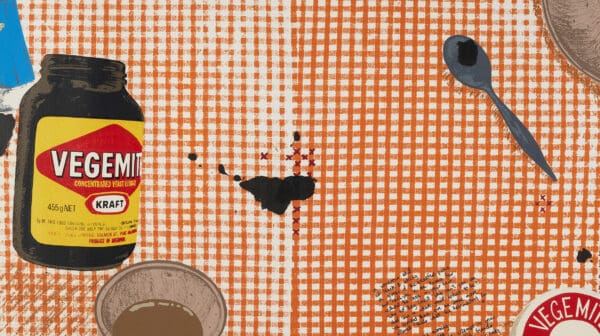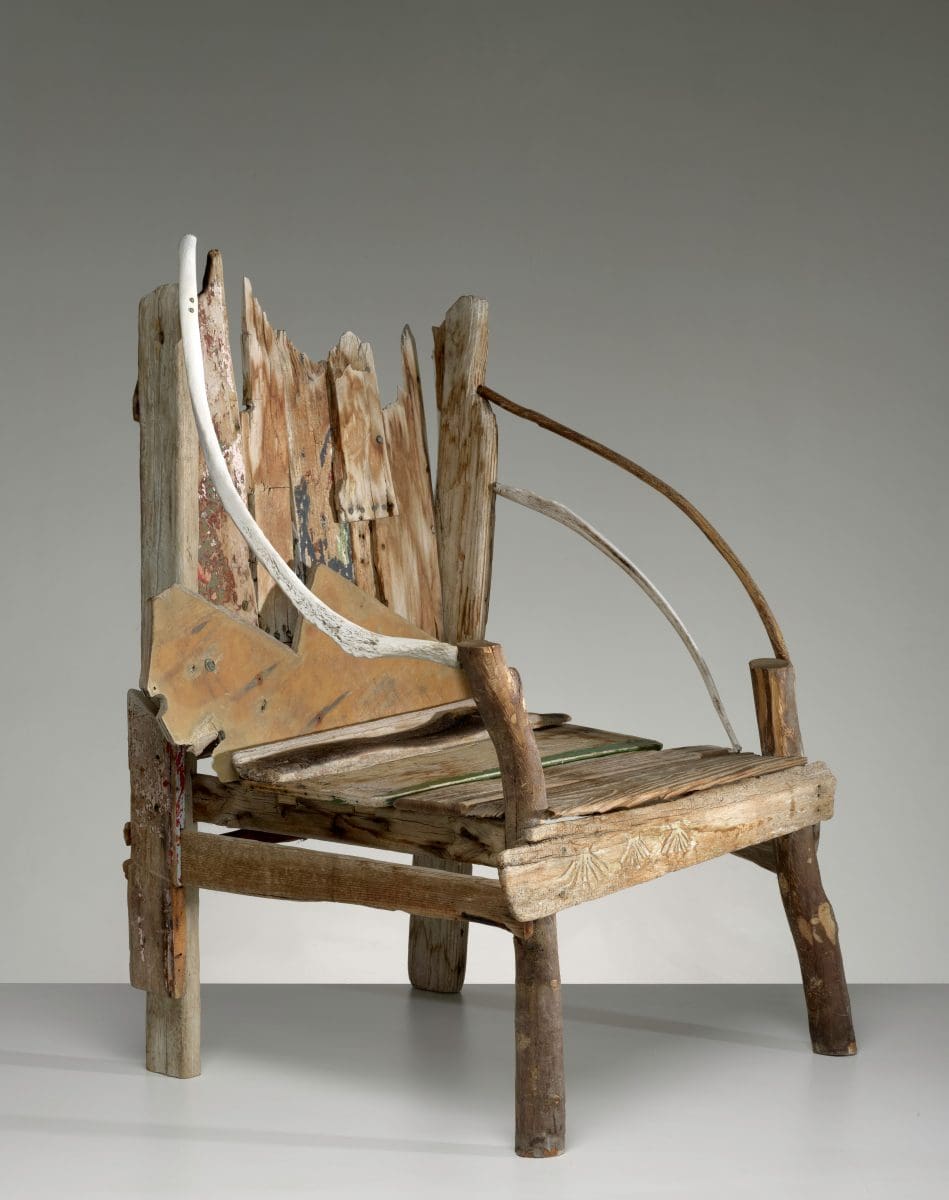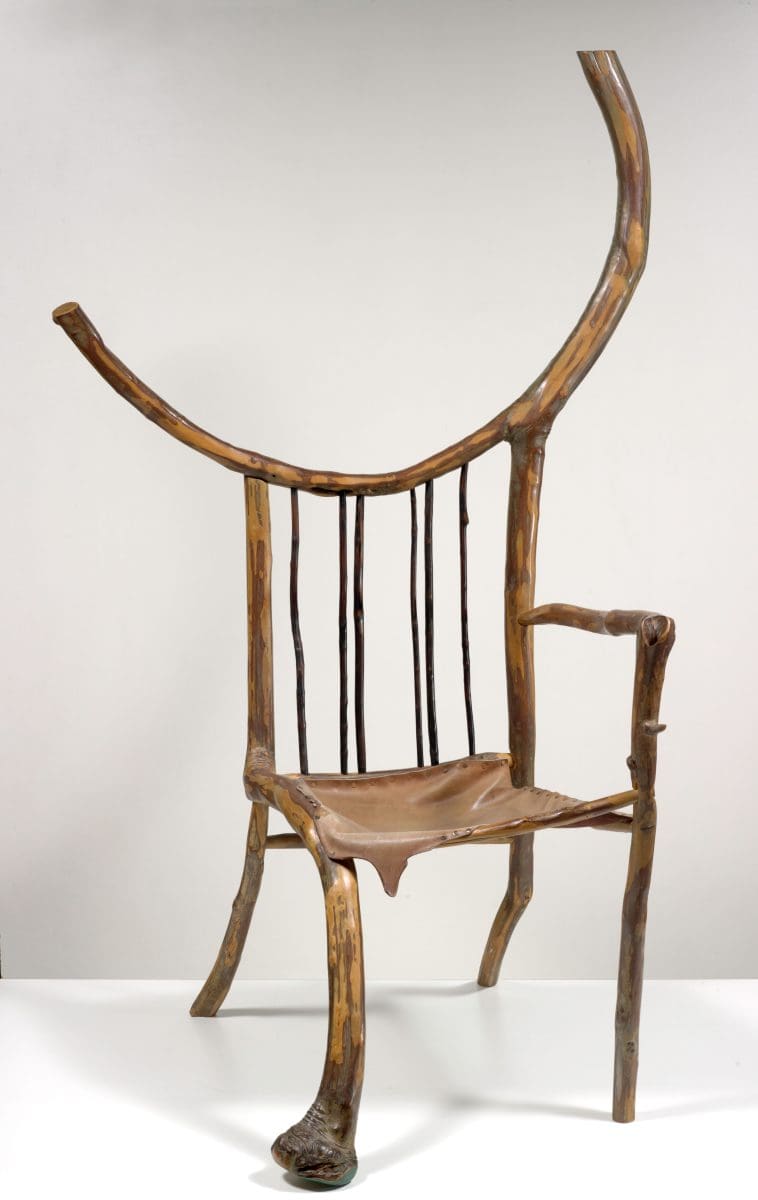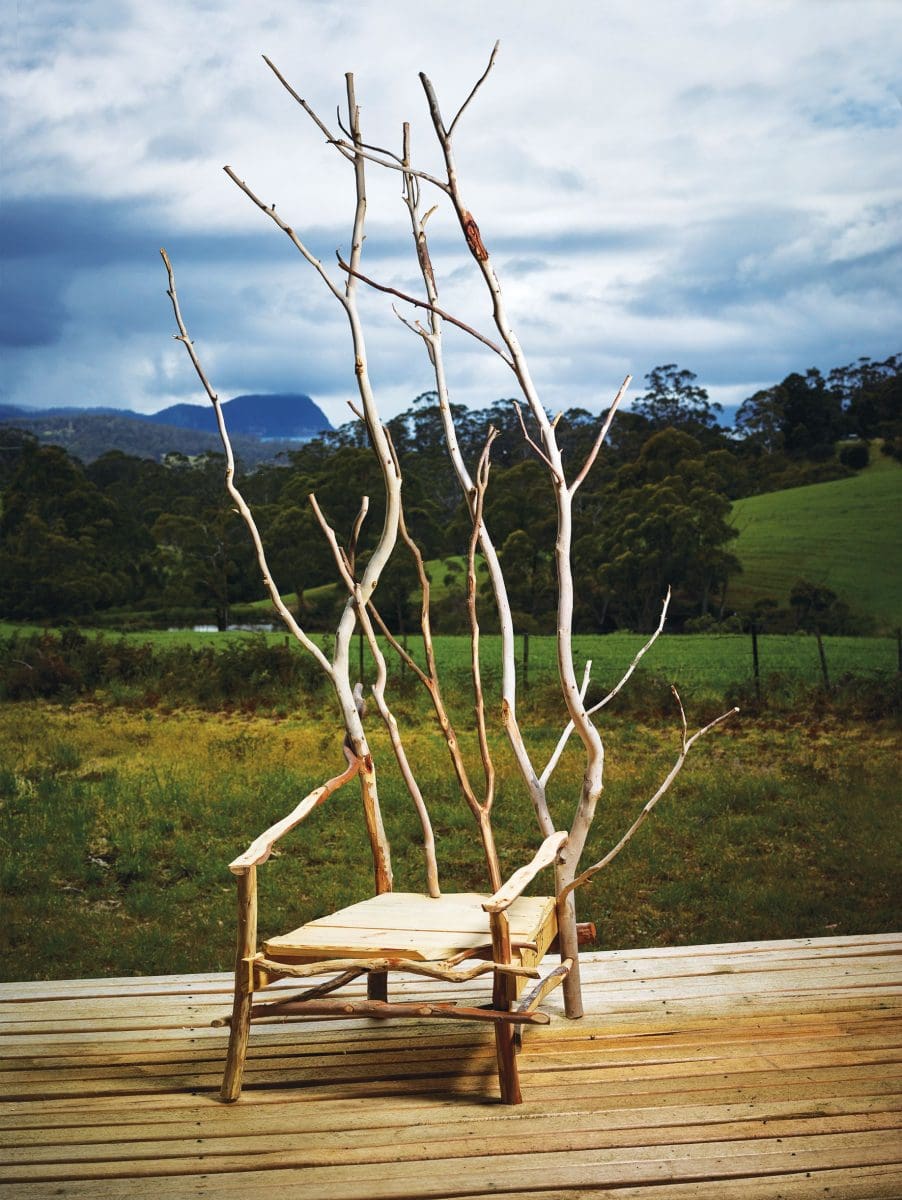
Reframing a Collection
Drawn from the Cruthers Collection of Women’s Art at the University of Western Australia (UWA), Lawrence Wilson Art Gallery’s show Place Makers, reframes the artists—who just happen to be female.

Gay Hawkes, Portrait of Cape Barren Island chair, 1995, wood (found driftwood, various species), bone (whale bone), metal (proprietary steel fasteners) and paint. Presented through the Australian Government’s Cultural Gifts Program by Pat Cleveland in memory of Bill Howroyd, 2018. Collection: Tasmanian Museum and Art Gallery.
Gay Hawkes, The Singing Cupboard, 2014-15, recycled pallets and plywood. Collection: Gay Hawkes. Photograph: Peter Whyte.

Gay Hawkes, Silver Plains chair, 1983, wood (horizontal scrub Anodopetalum biglandulosum), animal skin (cowhide), metal (copper tacks). Donated through the Australian Government’s Cultural Gifts Program by Ron Radford, 2016. Collection: Tasmanian Museum and Art Gallery.

Gay Hawkes, March Weil chair, 2014-15, wood (eucalyptus, horizontal scrub and recycled pallets), with spotted quoll fur, leather from cane toads and chicken feet. Collection: Gay Hawkes. Photograph: Peter Whyte.
In 2013, Tasmanian furniture maker and artist Gay Hawkes lost her home and art studio in the Dunalley bushfires, along with a significant personal collection of work spanning four decades. “Gay furnished her home with her own furniture,” explains principal curator at the Tasmanian Museum and Art Gallery, Jane Stewart. “The mats on the floor were painted canvases. She painted the curtains too. Nearly all of the furniture in her home was of her own making.”
For the past nine years, Hawkes has slowly been rebuilding new pieces for the future home she hopes to occupy. The House of Longing brings a selection of these hand-crafted cabinets, altar pieces, crucifixes and paintings together with pieces loaned from private collections, to create a space Stewart describes as “domestic and suggestive of a home”.
Influenced by Australian pioneering bush crafts and multiple artist residencies, a distinctive part of Hawkes’s practice is her use of found and salvaged materials. Often collected directly from her immediate surrounds, Hawkes’s furniture and objects are constructed from driftwood and shells found along the coastline, fallen branches and animal pelts. “Salvaged materials are vital to Gay’s practice and it’s something she’s really proud of,” says Stewart. Reflecting changes in the environment, driftwood is less common in Hawkes’s new pieces as it has become harder to find. Instead, palings from shipping pallets and crates make up works like The Singing Cupboard, 2014-2015.
Also screening in the gallery is a film about Hawkes by Roger Scholes containing video footage and photos compiled from the last few decades, including views of her former home in Dunalley. Much has been lost but as Stewart points out, “The works in the show are quite poignant, yet humorous as well . . . There is immense sadness and loss, but you also get this wonderful sense of resilience and humour.”
The House of Longing
Gay Hawkes
Tasmanian Museum and Art Gallery
18 March—28 August